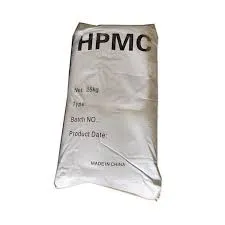
Dec . 10, 2024 13:00 Back to list
tile adhesive hpmc
The Role of HPMC in Tile Adhesives
In the construction and tiling industry, the formulation of tile adhesives is crucial for ensuring the durability and longevity of tiled surfaces. One often favored component in these formulations is Hydroxypropyl Methylcellulose (HPMC). This cellulose ether is a white, odorless powder derived from natural cellulose, which is modified to enhance its performance in various applications, particularly in tile adhesives. This article delves into the significance of HPMC in tile adhesive formulations, its benefits, and its impact on the overall performance of tiling projects.
What is HPMC?
Hydroxypropyl Methylcellulose is a non-ionic cellulose ether that is soluble in cold water, forming a clear, viscous solution. It is synthesized through the chemical modification of cellulose, a naturally occurring polymer found in plant cell walls. The unique properties of HPMC make it versatile, making it not only a common ingredient in tile adhesives but also in various other industries, including pharmaceuticals, food, and cosmetics.
Benefits of HPMC in Tile Adhesives
1. Enhanced Workability One of the primary advantages of incorporating HPMC into tile adhesives is its ability to improve workability. HPMC imparts excellent water retention properties, allowing the adhesive to remain workable for longer periods. This characteristic is particularly beneficial during tiling, as it allows for repositioning tiles without the adhesive drying too quickly.
2. Improved Adhesion HPMC enhances the bonding strength of tile adhesives. The inclusion of HPMC promotes better adhesion between the tile and the substrate, ensuring a stronger and more durable bond. This is especially important in environments that are subject to moisture or heavy foot traffic, as it helps to prevent loosening and damage over time.
3. Control of Open Time The open time of an adhesive refers to the duration during which it can be applied and manipulated before it begins to set. HPMC extends this open time significantly, which enables installers to work at a comfortable pace and make adjustments as necessary. This flexibility is essential in ensuring precise placements of tiles.
tile adhesive hpmc

4. Water Retention and Hydration HPMC is renowned for its superior water retention capabilities. This is crucial in tile adhesive formulations, as it ensures the mortar stays moist longer after application. Adequate moisture is vital for the proper hydration of cement, which ultimately leads to enhanced strength development and durability of the adhesive bond.
5. Resistance to Environmental Factors Tile adhesives incorporating HPMC exhibit excellent resistance to environmental factors such as humidity and temperature fluctuations. This resilience is particularly important in regions with extreme weather, as it ensures that the adhesive maintains its performance characteristics over time.
6. Compatibility with Various Materials HPMC is compatible with a wide range of materials used in ceramic, porcelain, and natural stone tiles. This versatility allows manufacturers to produce tailored adhesive formulations suitable for different applications, enhancing the overall effectiveness of the tiling products.
Applications and Trends
The demand for high-quality tile adhesives continues to rise with the growth of the construction industry. The use of HPMC is becoming more prevalent as manufacturers focus on producing eco-friendly and high-performance adhesives. Moreover, with the increasing popularity of thin-set tiles and large-format ceramics, HPMC's role in providing superior bonding and flexibility is more critical than ever.
In addition, as green building practices gain traction, the use of sustainable additives like HPMC plays a significant part in formulating eco-friendly adhesives. HPMC is non-toxic, making it a safer alternative for both workers and the environment.
Conclusion
In summary, Hydroxypropyl Methylcellulose is an indispensable component in modern tile adhesive formulations. Its multitude of benefits, including enhanced workability, improved adhesion, and water retention, contributes to the overall performance and longevity of tiled surfaces. As the construction industry continues to evolve, the role of HPMC will likely expand, paving the way for more innovative and sustainable adhesive solutions that meet the demands of today's builders and architects. By embracing advancements in materials science, including the incorporation of HPMC, the industry can ensure that tiled surfaces remain not only aesthetically pleasing but also exceptionally durable and resilient.
-
Versatile Hpmc Uses in Different Industries
NewsJun.19,2025
-
Redispersible Powder's Role in Enhancing Durability of Construction Products
NewsJun.19,2025
-
Hydroxyethyl Cellulose Applications Driving Green Industrial Processes
NewsJun.19,2025
-
Exploring Different Redispersible Polymer Powder
NewsJun.19,2025
-
Choosing the Right Mortar Bonding Agent
NewsJun.19,2025
-
Applications and Significance of China Hpmc in Modern Industries
NewsJun.19,2025







